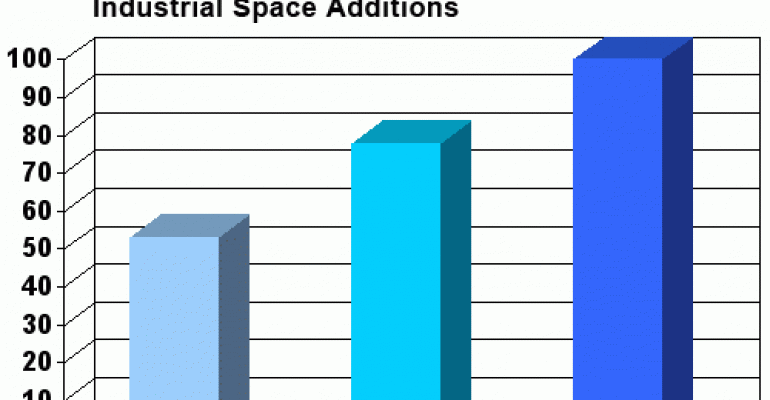Nearly 100 million sq. ft. of fresh industrial space hit the market during the first nine months of 2005. Despite that big burst of capacity, there’s no sign of rising vacancies or falling rents. Indeed, the industrial market actually tightened during that period.
Two economic trends — soaring cargo traffic on the west coast and moderate GDP growth — have helped absorb this new supply. Even the 27 million sq. ft. of speculative industrial space that hit the market during the third quarter (up from just 4 million sq. ft. the previous quarter) was easily absorbed. According to a new report by Grubb & Ellis, national industrial vacancy fell to 8.4% at the end of last quarter, or 20 basis points below its midyear level. Only eight of 48 national markets posted vacancy increases during the third quarter, and none of was more than .5%.
“The industrial market is performing much better than the office market, but you don’t hear that too much,” says Bob Bach, director of national research at Grubb & Ellis. Asking rental rates also have budged slightly in favor of landlords. The weighted average rate for warehouse-distribution space was $4.41 per sq. ft. at midyear, up nine cents from the end of the first quarter and 15 cents from midyear 2004.
Ironically, the same forces that have hurt the office market may be working to the advantage of investors in the industrial sector. While the office market depends heavily on job creation, industrial demand can actually be created when firms reduce headcount.
Bach theorizes that many firms are investing in state-of-the-art facilities as a way to compensate for lost workers. This is not a new trend, but it illustrates how similar economic trends can have varied effects on the property market. “I’d argue that new facilities allow distributors to be more efficient in storing and moving their materials. It’s also my impression that the square-foot per employee ratio has been rising in industrial buildings while it has been falling in office buildings,” says Bach.
There’s also the China syndrome — the demand for space to handle the still-rising tide of goods coming across the Pacific from Chinese factories. Bach points to California’s booming Inland Empire market, where roughly 15 million sq. ft. of new industrial space has come to market since the mid 1990’s. Five years ago, industrial vacancy was hovering near 15% southeast of the Los Angeles metro area. By the end of September, however, the region had the lowest vacancy rate in the nation at 2.1%, according to Grubb & Ellis.

“This has become a very vibrant and reflexive market,” says Bach. “It used to be that older warehouse buildings sat idle, but now developers are scraping them down to their foundation and converting them into flexible space.”
Even so, there are some troubling signs in the economy. Consumer confidence is down and retail sales growth is slowing. The there are the travails of the U.S. auto industry, including the bankruptcy filing by parts maker Delphi Corp. So far, there has been little impact: Both Delphi and its former parent, General Motors, own their factories and warehouses. That lessens the risk of a vacancy spike while it may even present an opportunity to developers bent on converting these older properties. On the other hand, suppliers to Delphi stand to lose business when it transfers manufacturing out of the U.S.

